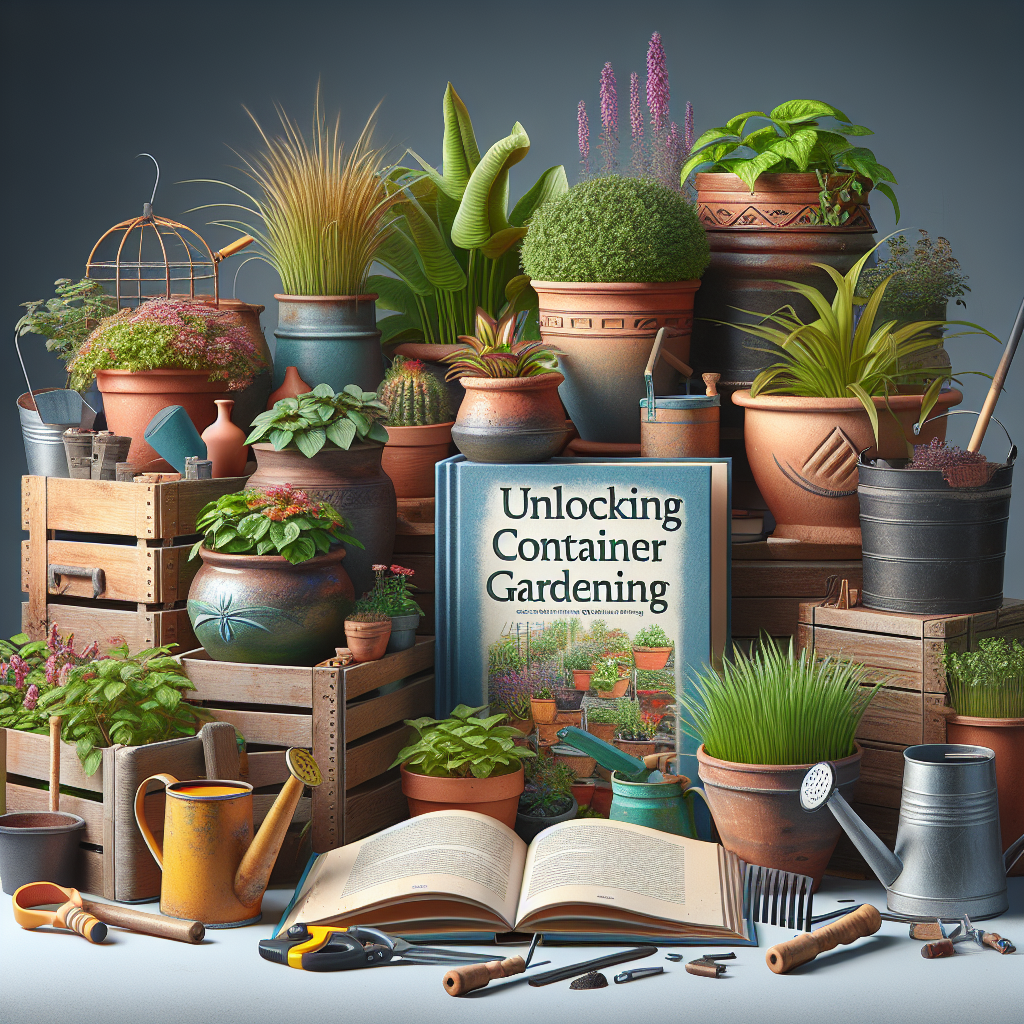Container gardening is a popular and versatile way to bring plants into your home, balcony, or garden. Whether you have limited outdoor space, poor soil quality, or just want to add a touch of greenery to your living space, container gardening can be a great option. However, successful container gardening requires some knowledge and careful attention to ensure that your plants thrive. In this article, we will discuss some key tips and secrets to unlock the potential of container gardening.
Choose the Right Container
The first step in successful container gardening is choosing the right container for your plants. The size and material of the container can have a significant impact on plant growth. Generally, larger pots provide more room for root growth and moisture retention, which can result in healthier plants. However, it is also essential to consider the type of plant you will be growing. Some plants have shallow roots and do not require deep pots, while others need more room to spread out.
In terms of materials, there are several options available, each with its pros and cons. Terracotta pots are popular for their classic look but tend to dry out quickly due to their porous nature. Plastic pots are lightweight and retain moisture well but may not be as durable as other materials. Wood containers also provide good insulation for roots but may rot over time.
When choosing a container, make sure it has drainage holes at the bottom to prevent water from collecting and causing root rot. Additionally, consider the location where you will place your containers – some materials may be better suited for sunny or shady areas.
Select the Right Plants
Once you have chosen your containers, it is time to select the right plants for your space. Different plants have different requirements for sunlight, water, and soil conditions – make sure to choose ones that are suitable for your specific environment.
Consider the amount of sunlight that your container receives throughout the day – most vegetables and flowering plants require at least 6-8 hours of direct sunlight to thrive. If you have limited sunlight in your space, opt for shade-loving plants such as ferns or begonias.
When it comes to watering needs, some plants prefer moist soil while others are more drought-tolerant. Make sure you research each plant’s specific requirements before planting them together in a container.
Additionally, consider the mature size of the plant when selecting varieties for containers – overcrowding can lead to competition for resources and stunted growth. Choose compact or dwarf varieties that are suitable for small spaces.
Use High-Quality Soil Mix
One of the keys to successful container gardening is using high-quality soil mix specifically formulated for containers. Regular garden soil may not drain well enough in containers and can become compacted over time – leading to poor root growth and nutrient uptake.
A good potting mix should be lightweight, well-draining, and rich in organic matter necessary for plant growth. Look for mixes that contain ingredients such as perlite or vermiculite to improve drainage and aeration.
When planting in containers, make sure not to compress the soil too tightly around roots – gently loosen roots before planting if they are pot-bound. Water newly planted containers thoroughly after planting to settle the soil around roots.
Provide Adequate Watering
Watering is one of the most crucial aspects of successful container gardening – too much water can lead to root rot while too little can cause wilting and nutrient deficiencies.
To determine when plants need water, check the moisture level in the soil by sticking your finger about an inch below the surface – if it feels dry at this depth, it’s time to water again.
Watering frequency will depend on factors such as plant type, pot size, temperature fluctuations (hotter weather requires more frequent watering), and humidity levels (drier air leads to faster evaporation).
Avoid overwatering by allowing excess water to drain out from the bottom of containers – use saucers underneath pots if necessary but make sure not to let water sit stagnant around roots.
Fertilize Regularly
Plants grown in containers require regular fertilization since nutrients leach out faster through drainage holes than they would in-ground gardens. Choose a balanced liquid fertilizer formulated specifically for container-grown plants with equal amounts of nitrogen (N), phosphorus (P), and potassium (K) labeled on packaging.
Follow instructions on fertilizer labels carefully regarding application rates and frequency – apply sparingly during active growth periods like spring or summer while reducing feeding during dormancy periods like fall or winter.
Some slow-release fertilizers are also available that release nutrients gradually over time – these can be convenient options if you forget regular feeding schedules but still provide necessary nutrients necessary for healthy plant growth.
Monitor Pests & Diseases
As with any garden setting, pests like aphids or spider mites can become problematic in container gardens if left unchecked. Inspect leaves regularly for signs of pests such as holes or discoloration; use non-toxic insecticidal soaps or neem oil sprays if necessary.
Diseases caused by fungi like powdery mildew or bacterial infections may also affect plants grown in close quarters within containers; maintain good air circulation around leaves by spacing pots apart from each other.
Conclusion
Container gardening offers endless possibilities for bringing greenery into small spaces without needing extensive landscapes
and understanding these tips will help ensure success with this type of cultivation method regardless where one lives
or what kind vegetation they desire
Unlocking secrets isn’t always easy – especially when it comes down so something like growing vegetables indoors! But now we know exactly how achieve success with simple tips which anyone cango implement today!














